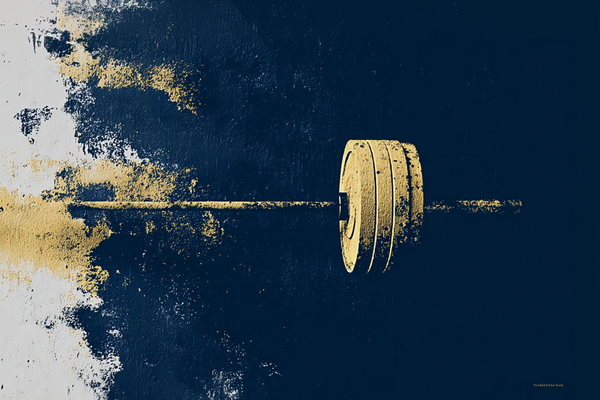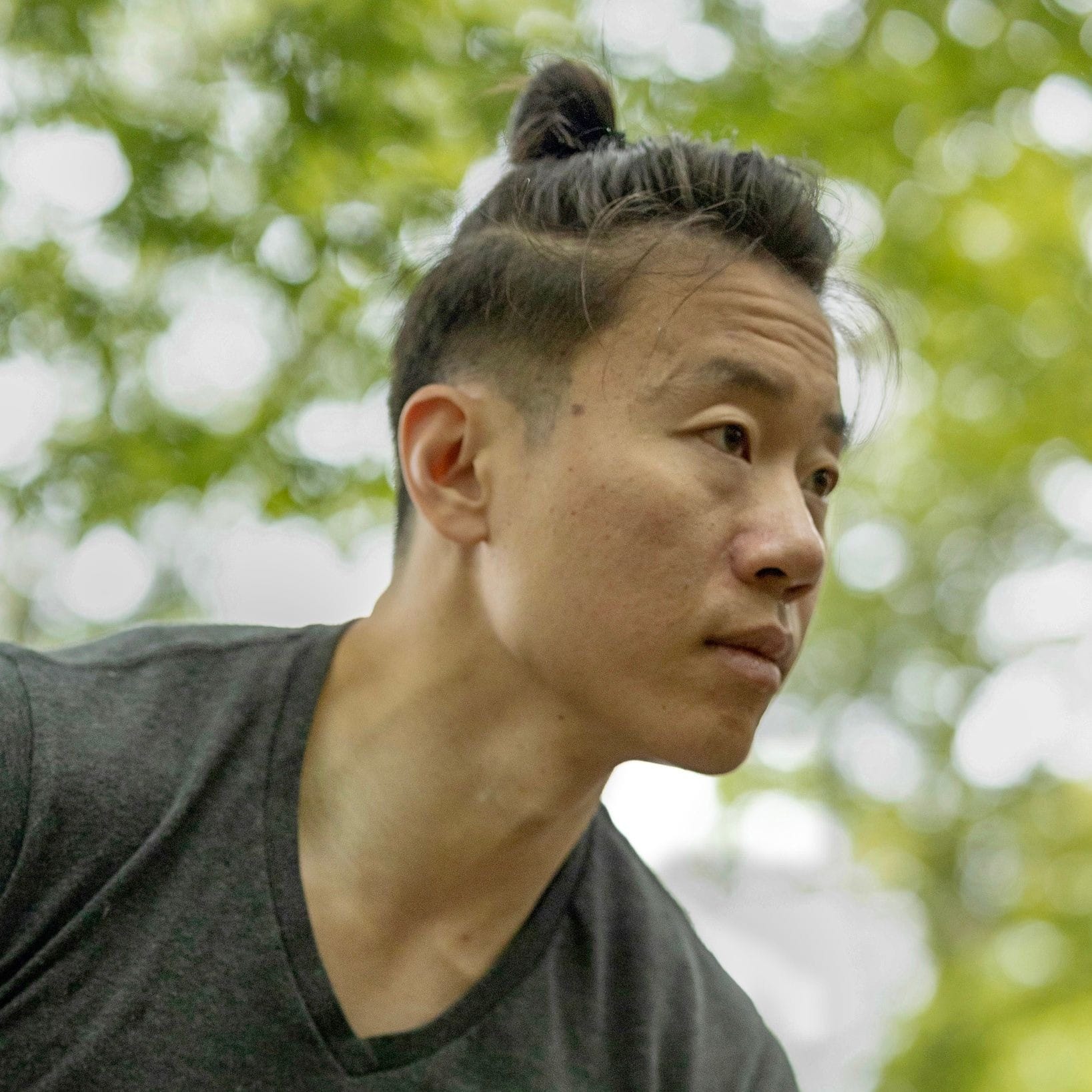To embark on any new venture without the guarantee of success requires conviction—the grounded belief that what you're working on has merit, is worth pursuing, and is achievable by you.
But where does that conviction come from?
Not the belief in a specific idea. The deeper thing: self-belief in your own competence. Confidence in your ability to navigate uncertainty. Where does that come from?
From taking risks.
There's a strong correlation between risk and confidence. Not that confidence is required to take risks—though that's true. It's the inverse.
Successful risk-taking creates confidence.
The more risks you take with favorable outcomes, the more confidence you build as a result.
Anyone who has seriously explored strength training knows the term "progressive overload." [ref] Trainees gradually but consistently increase the weight, reps, sets, and frequency of training.
Progressive overload leads reliably to strength gains. Your muscles respond to increased load—microtears in your muscle fibers heal stronger than before. The 225 lb bench press that felt impossible in your early months becomes comfortable after years of dedicated training.
The principle holds for endurance too. Running, cycling, swimming—start with low volume and ramp up week after week.
You don't run a marathon after a year of no running. Similarly, you don't bet your career on an idea without building up to it.
You have build up to it.
The Mechanism of Confidence Building
We can look at our brains as prediction engines [ref]. They are constantly interpreting information, forming a model of what's happening, and creating expectations what will happen in the future.
Whether the coffee is cool enough to drink yet. Whether you will make it to work on time today. Whether your performance review will go well this quarter.
Confidence is essentially your brain running a simulation: "That plan? It'd totally work."
And while your brain is capable of imagine brand new possibilities that have never occurred, it's weighted on past experiences. The more positive memories of past moments of successful risk-taking, the more your brain predicts success.
This is why the advice "fake it until you make it" rarely works if you have no relevant memories to draw on. Unless you have a very strong, suggestible imagination (which some people do), it's hard to see yourself succeeding at something when you've never done anything even remotely close to it.
This idea is bolstered by Stanford psychology professor Albert Bandura's self-efficacy theory—that our self-beliefs are influence by direct experiences (as well as vicarious ones, and verbal encouragement) [ref].
Progressive Overload Metaphor
In the gym, a rep is a single execution of an exercise.
In risk-taking, rep is any action with uncertainty and potential for loss.
It can be social—asking someone for their contact information. It can be creative—publishing your work where others can see it. It can be financial—making an investment. It can be career-related—accepting a new role. The key elements are the same: you believe in it, but you don't know for sure it'll work.
Just as in strength training, both volume and weight of the risk matter.
Volume is the number of risks you take over time. Weight is the size or stakes of each individual risk. You need enough reps to build the neural pathways, and if you progressively increase the training load via more risks and higher stakes, you will build your confidence—ie your capacity to take bigger risks.
For social risks, you might progress from making eye contact with strangers, to starting conversations, to asking for someone's number, to asking someone out on a date.
For creative risks, the hierarchy might be sharing an idea with close friends, then spending a few hours working on it, posting a finished version online, then pitching to a publication / institution / potential biuyer.
The key is to start where your current fitness level allows, then progress from there.
It's similar to exposure therapy, where gradual and repeated exposure to feared situations lead more than 90% of patients to successfully desensitize. a success rate above 90%. Through progressive exposure, therapists train patients to rewrite their brains to predict different outcomes.
Of course everyone responds differently.
In strength building there are "hard gainers" and "easy gainers", referring to their bodies' different responses to training. There's often a relationship there with fast and slow twitch muscles—differing ratios of these fibers lead to faster success with explosive versus endurance activities.
Similarly some people more easily gain confidence from successful experiences, while others take many good experiences to gain a similar level of self-belief.
Injuries and Recovery: Dealing with Failure
Of course risks don't always pay off. That's part of the deal. But not all failures are created equal.
Often times, the failure is manageable: things didn't go as planned, but you survive and learn that failing isn't that bad. Like falling off a bike and getting back up—a little painful in the moment, but ultimately a learning moment. [ref] In this way, failure can actually build confidence.
Then there are catastrophic failures. I blew out my knee on a gymnastics vault, and after multiple surgeries, I returned to gymnastics, but never competed floor or vault again.
Financial ruin, major reputational damage, severe burnout are going to put you on your back. You don't just bounce back. You need to go back to basics and rebuild from ground zero. This often means lowering the intensity of risks significantly while you recover.
Even here, progressive overload is how you rebuild. Starting again with small, infrequent, low-downside risks, you rebuild your capacity to bet on yourself.
Building My Coaching Business
When I decided to leave my well-paid PM job at Facebook to start a coaching business, I was also planning to start a family with my wife. These two major life transitions created both urgency and risk—but I built up to it.
I started with lower-intensity reps: coaching part-time while still employed. This let me test the model, build initial clients, and prove to myself that people would actually pay for my services. But there was still a leap I needed to make—I couldn't build the business I wanted while working full-time.
So I set clear parameters. I gave myself a one-year runway after quitting while we tried for our baby. If things didn't work out in that year, I could still go back and find a full-time job before parenthood hit. That timeline created a backstop—manageable stakes, not catastrophic ones.
I went full-time. And honestly, the first couple of months were slower than I'd hoped. Growth wasn't as fast as I wanted. But I stayed in the game. I kept taking the reps. And eventually, it got better and better. The business found momentum.
Now, more than three years later, I have a completely different relationship with risk. I have so much confidence that if I had another idea—one that might require three years to really get to a good place—I could start building toward it now. I'd enjoy the process. I'd trust that I could navigate the challenges along the way. I'd believe I could make it successful.
That's my new level of self-belief. The early reps made the bigger risks possible.
Confidence isn't built overnight. It's built through consistent reps that grow over time.
Here's the fascinating paradox: the confidence you gain from a risk is directly proportional to how much it scared you.
The comfortable choices that never made your stomach tingle won't give you much pride or self-belief on the other side. But the big, calculated leap you built up to—the one that genuinely terrified you? When that pays off, it feels way better than you probably imagine.
That's what makes progressive overload so powerful. You're not just training yourself to take bigger risks. You're training yourself to become someone who can.

